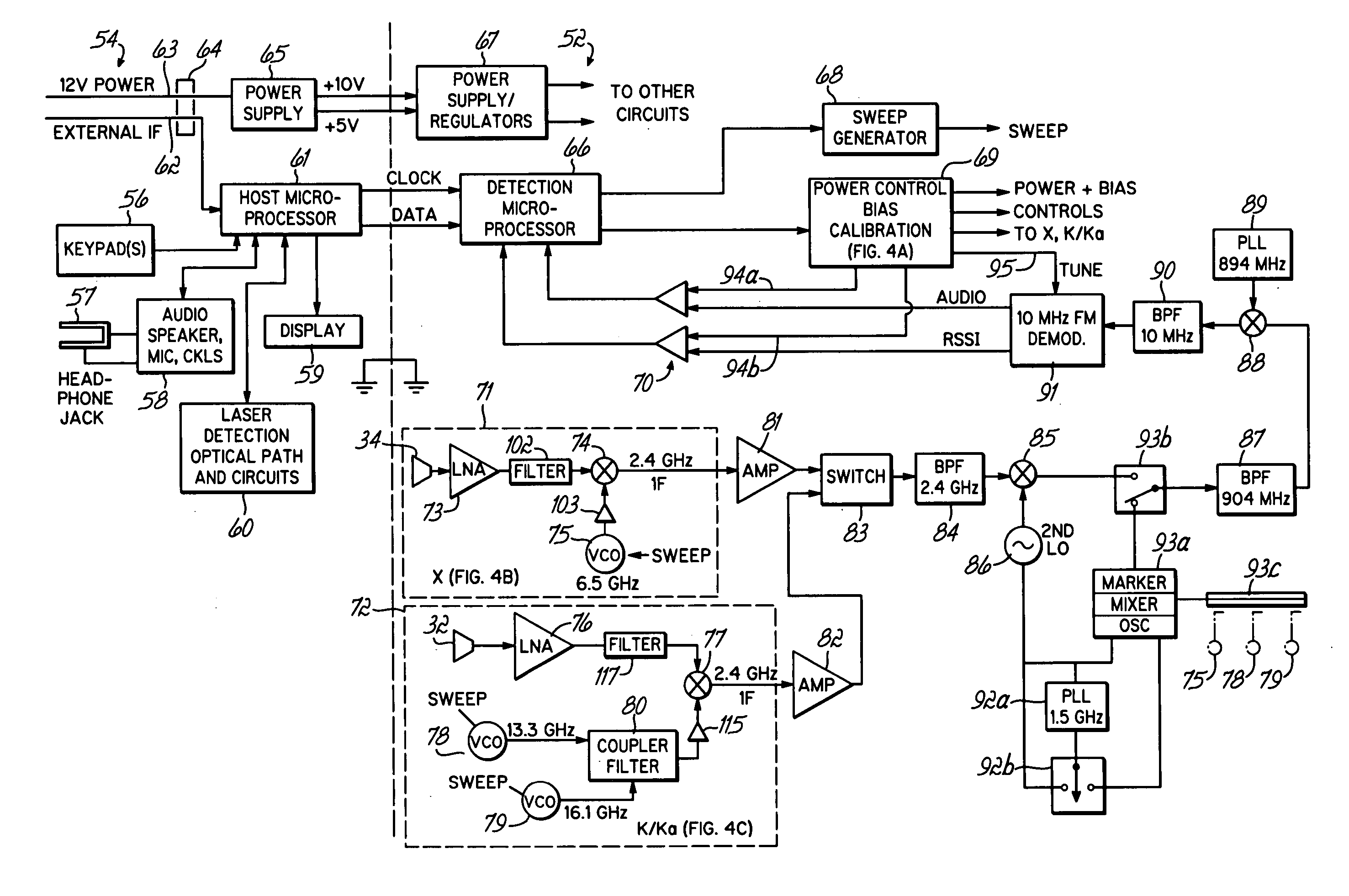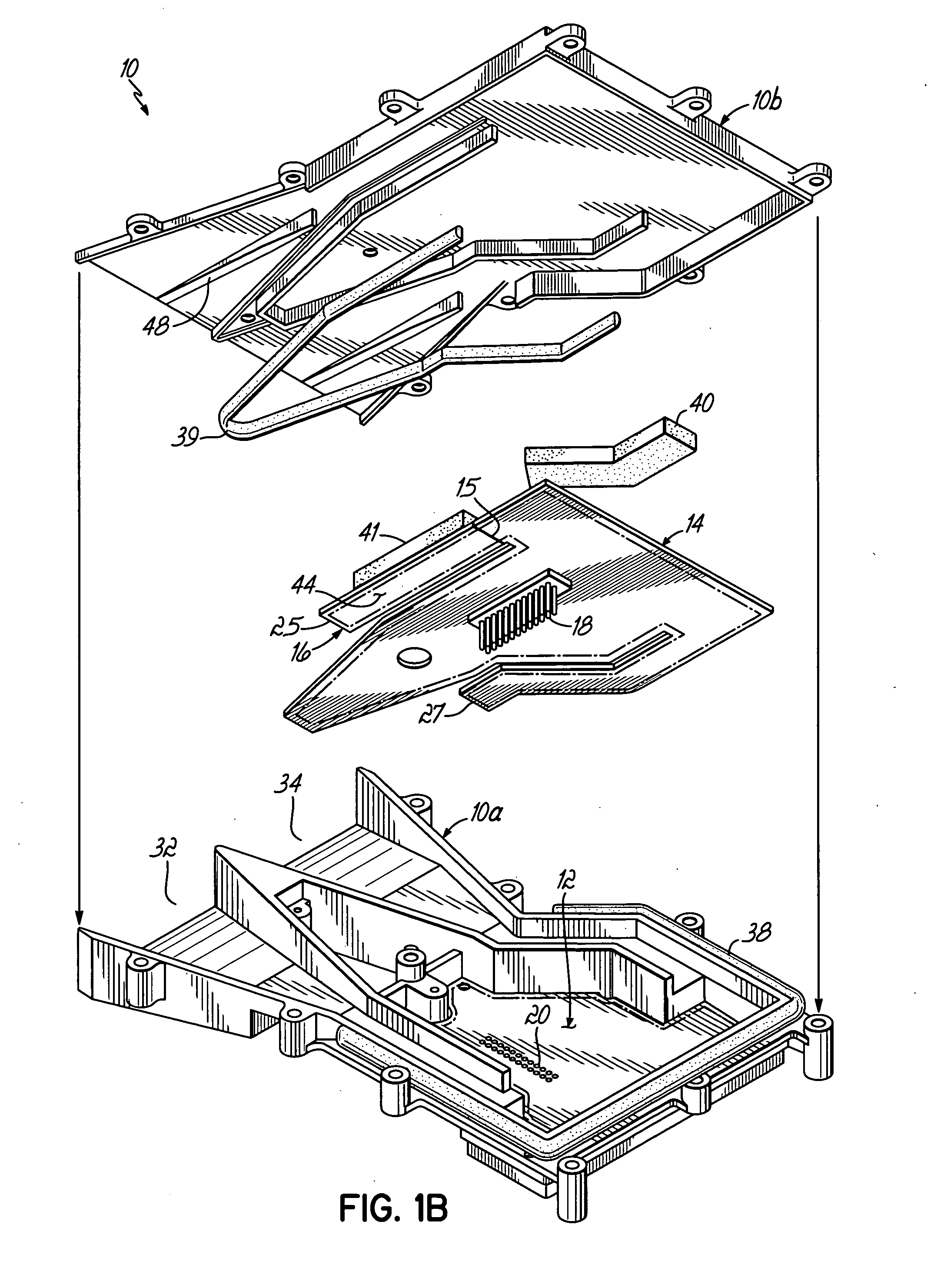Radar detector with reduced emissions
a detector and emission reduction technology, applied in the field of detectors, can solve the problems of radiation leakage, significant radiation outward emission of such detectors, and possible cracks or gaps in the case, and achieve the effect of reducing the amount of undesired signal radiation
- Summary
- Abstract
- Description
- Claims
- Application Information
AI Technical Summary
Benefits of technology
Problems solved by technology
Method used
Image
Examples
Embodiment Construction
[0029] Referring to FIG. 1A, a radar detector 10 in accordance with principles of the present invention utilizes a metal or other conductive material case that is formed in two halves 10A and 10B. The case encloses the circuit boards forming the detection circuitry of a radar detector, including a digital circuit board 12, a RF circuit board 14 and a K / Ka band RF circuit board 16. Circuit board 16 is affixed to circuit board 14 by a solder joint 15 between those two boards, that effectively connects the signal traces on board 16 to the signal traces on board 14. Digital board 12 is coupled to RF board 14 by a matrix of pins 18 best shown in FIG. 1B, which insert into a matrix of sockets 20 in digital board 12. K / Ka RF board 16 is formed separately from RF board 14 to permit the use of a different layering on K / Ka board 16, for more optimal conveyance of K / Ka frequency radar signals. Furthermore RF board 14 is formed separately from digital board 12 to similarly permit the use of dif...
PUM
 Login to View More
Login to View More Abstract
Description
Claims
Application Information
 Login to View More
Login to View More - R&D
- Intellectual Property
- Life Sciences
- Materials
- Tech Scout
- Unparalleled Data Quality
- Higher Quality Content
- 60% Fewer Hallucinations
Browse by: Latest US Patents, China's latest patents, Technical Efficacy Thesaurus, Application Domain, Technology Topic, Popular Technical Reports.
© 2025 PatSnap. All rights reserved.Legal|Privacy policy|Modern Slavery Act Transparency Statement|Sitemap|About US| Contact US: help@patsnap.com



